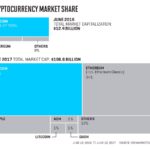-
Trump declares April 2 “Liberation Day,” plans sweeping new US tariffs
-
Targets are “dirty 15” nations, including China, EU, Canada and Mexico, as well as key sectors
-
Analysts warn that tariffs could lead to inflation, supply-chain issues, and market volatility
Donald Trump has reportedly declared April 2nd as “Liberation Day,” announcing a major change in American trade policy that will take effect on that date. Trump, with his characteristic rhetoric and protectionist stance plans to implement sweeping new tariffs against countries that are perceived to have unfair trade advantages.
This move could redefine America’s role in global commerce. It was foreshadowed earlier announcements as well as rising global trade tensions. As April 2 approaches businesses and foreign governments prepare for aggressive trade measures ostensibly intended to revive US domestic industry and curb longstanding trade deficits.
What Tariffs Are Launched on “Liberation Day?”
Trump is expected implement broad-based tariff increases on April 2, dubbed by the administration “Liberation Day”. These tariffs will likely apply to goods from a group of countries known as the “Dirty 15”, nations that are reportedly assessed to have the largest trade deficits with the US.
This list is reportedly topped by countries like China, Canada and Mexico. The new tariffs may cover a wide range products, including electronics and food products. These measures are in addition to the tariffs already in place on steel, aluminium, and auto imports, imposed earlier this month.
Related Trump’s Tariff Gambit Will “Liberation Day’ for US Trigger Gold Surge and Bitcoin Rebound?
The administration will also reportedly focus on key industries like pharmaceuticals and semiconductors. Trump’s Trade Office has also proposed steep entry fees for Chinese-built vessels, which could reach up to $1.5m per vessel. This is to reduce China’s influence in the maritime industry and stimulate US shipbuilding.
Trump has hinted at a universal base tariff system in the past. A system like this would impose tariffs on almost all imported goods, irrespective of their origin. This would be a radical departure from the decades-old US free trade policy.
Retaliation and economic fallout are feared
Foreign governments have already begun to prepare a response. China, for instance, has implemented counter-tariffs against some US agricultural products.
The European Union is considering retaliatory actions of its own, which could target American goods such as whiskey and motorcycles. Canada has introduced tariffs against certain US steel and tech goods, while Mexico is planning a comprehensive response.
The Trump administration has also recently launched new trade investigation into industries like copper and lumber. These investigations could lead to further tariffs in the coming months. Analysts warn that, while these trade actions are intended to boost domestic production, they may instead cause higher inflation and disrupt global supplies chains.
Trump Remains Firm in Tariff Strategy
Despite the opposition of certain business groups and advisors on economic matters, President Trump is unwavering in his protectionist stance.
Related:China’s Tariff Retaliation Drags Altcoin prices down; ETH Eyes $2,2K-$2.5K
For his administration, “Liberation Day”, April 2nd, is more than a policy change – it’s seen as a symbol of reclaiming the industrial strength of America.
This site is for entertainment only. Click here to read more






